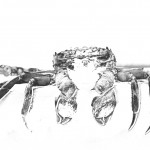In 1933, the rector of the University of Leiden, J. Huizinga, chose as the theme…
Homo Ludens: engaging with one’s worldview
Tiong had some interesting questions for me the other day. It made me have a new look at ‘play’ – what are the elements of play that are of interest to me, and why?
 Consulted Huizinga’s Homo Ludens to get a better grip on the concept of play. He argues that play is not part of culture but produces culture. When he went to London in 1937 to talk about his book, the title of his address was ‘The play element of Culture”. Seeing this, his hosts corrected him, according to them it should be “The play element in Culture”. Huizinga put back the genitivus, quote from the introduction (page V, my translation): “because, for me, the question was not what the place of ‘play’ is amongst other cultural phenomena, but the question if and in what measure culture itself has the characteristics of [this thing we call] ‘play’.
Consulted Huizinga’s Homo Ludens to get a better grip on the concept of play. He argues that play is not part of culture but produces culture. When he went to London in 1937 to talk about his book, the title of his address was ‘The play element of Culture”. Seeing this, his hosts corrected him, according to them it should be “The play element in Culture”. Huizinga put back the genitivus, quote from the introduction (page V, my translation): “because, for me, the question was not what the place of ‘play’ is amongst other cultural phenomena, but the question if and in what measure culture itself has the characteristics of [this thing we call] ‘play’.
So there: to play is serious business.
Huizinga defined play as follows :
“Summing up the formal characteristic of play, we might call it a free activity standing quite consciously outside ‘ordinary’ life as being ‘not serious’ but at the same time absorbing the player intensely and utterly. It is an activity connected with no material interest, and no profit can be gained by it. It proceeds within its own proper boundaries of time and space according to fixed rules and in an orderly manner. It promotes the formation of social groupings that tend to surround themselves with secrecy and to stress the difference from the common world by disguise or other means.”
To quote another authorative source, Wiki:
“Play is a rite and a quality of mind in engaging with one’s worldview. Play refers to a range of voluntary, intrinsically motivated activities that are normally associated with pleasure and enjoyment. Play may consist of amusing, pretend or imaginary interpersonal and intrapersonal interactions or interplay. The rites of play are evident throughout nature and are perceived in people and animals, particularly in the cognitive development and socialization of those engaged in developmental processes and the young. Play often entertains props, tools, animals, or toys in the context of learning and recreation. Some play has clearly defined goals and when structured with rules is entitled a game. Whereas, some play exhibits no such goals nor rules and is considered to be “unstructured” in the literature.”
Taking this into account, what is it that we do what we do when we play what we play?
Huizinga quotes biologists, who argue that to play is to get rid of superabundant vitality. Psychologists note that both animals and humans learn by playfully imitating their elders. And that in playing, children learn to handle and control their agression, jealousy and other difficult and upsetting emotions. We also play to satisfy desires that are, in reality, unfulfillable. We play to gather information about the physical world and to learn to store and access this information. We play to test ourselves against others. We play because we are bored. We play because it is a fun thing to do.
So – basically – we play to make sense of the world and to make ourselves fit into the world. We do this by:
– Imitating: learning from the example of other people
– Play-acting: trying out different roles, learning to handle difficult emotions
– Adjusting: dealing with the fact that we are relatively powerless (baby = god, adult = adjusted).
– Exploring: using the body to learn about the world and about what we can and cannot do with our body
– Competing: finding out who is fastest/smartest/…est
– Relating: trying out social relations within groups of people
Of this six “Exploring’ most accurately describes that what we have been conditioned not to do when encountering works of art. A conditioning that I have tried to overcome in my experiments, with varying success.
| « Experiment 003/2009: trial run at IBB | <-- previous post | next post --> | Exploring develops the brain » |
|---|







